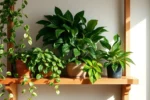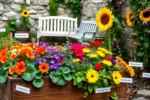Stepping into the world of indoor plants offers more than just an aesthetic upgrade for your living space; it provides a unique opportunity to express creativity and cultivate a personal sanctuary within your home. Whether you’re just beginning to nurture your green thumb or have a well-tended indoor jungle, the art of displaying plants can transform any room into a lush haven that feels both vibrant and inviting.
For those new to indoor gardening, this journey will introduce you to inventive ways to showcase your plants, turning even the smallest corner into a lively focal point. Experienced gardeners will find inspiration to reimagine their existing setups, exploring how simple adjustments can breathe new life into their beloved collections.
As we delve into this topic, prepare to discover practical tips for selecting the perfect plants for each room, as well as innovative display ideas that cater to different styles and spaces. From hanging gardens in the kitchen to cascading greens in the bathroom, this article will equip you with the knowledge and confidence to create stunning plant displays that reflect your personal taste and bring joy to your everyday environment.
Living Room Plant Artistry
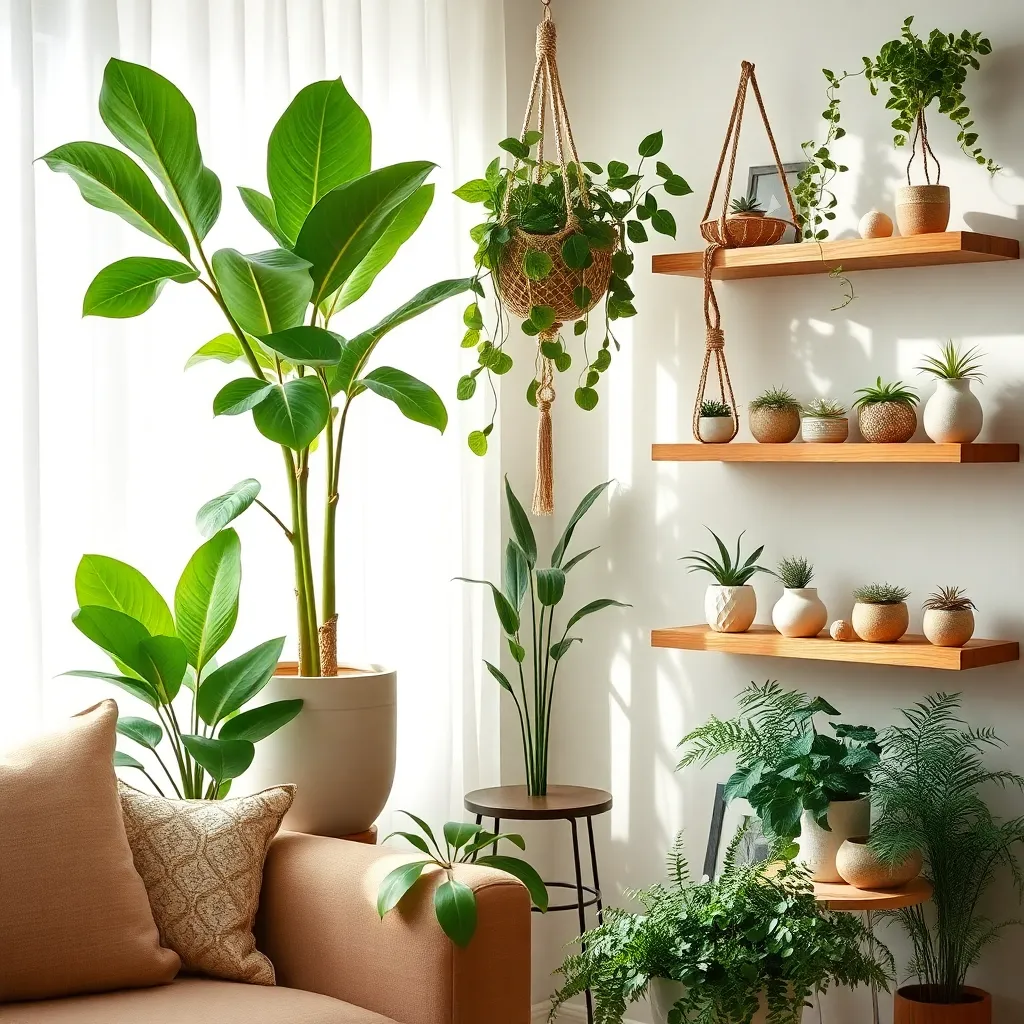
Transforming your living room into a verdant oasis involves a blend of creativity and practical plant care. Start by selecting plants that thrive in indoor environments, such as the resilient snake plant or the elegant peace lily, both of which are known for their air-purifying qualities.
When arranging plants, consider using a variety of heights and textures to create visual interest. Placing taller plants like fiddle leaf figs in corners can draw the eye upward, while cascading plants such as pothos or string of pearls can soften shelves or window ledges.
It’s crucial to match your plants with the right potting mix for healthy growth. Most indoor plants prefer a well-draining soil mix; consider adding perlite or orchid bark to increase aeration and drainage.
Maintaining appropriate watering schedules is vital for indoor plant success. Generally, it’s best to water when the top inch of soil feels dry, but always check individual plant requirements as some, like succulents, may need less frequent watering.
Kitchen Herb Display Ideas
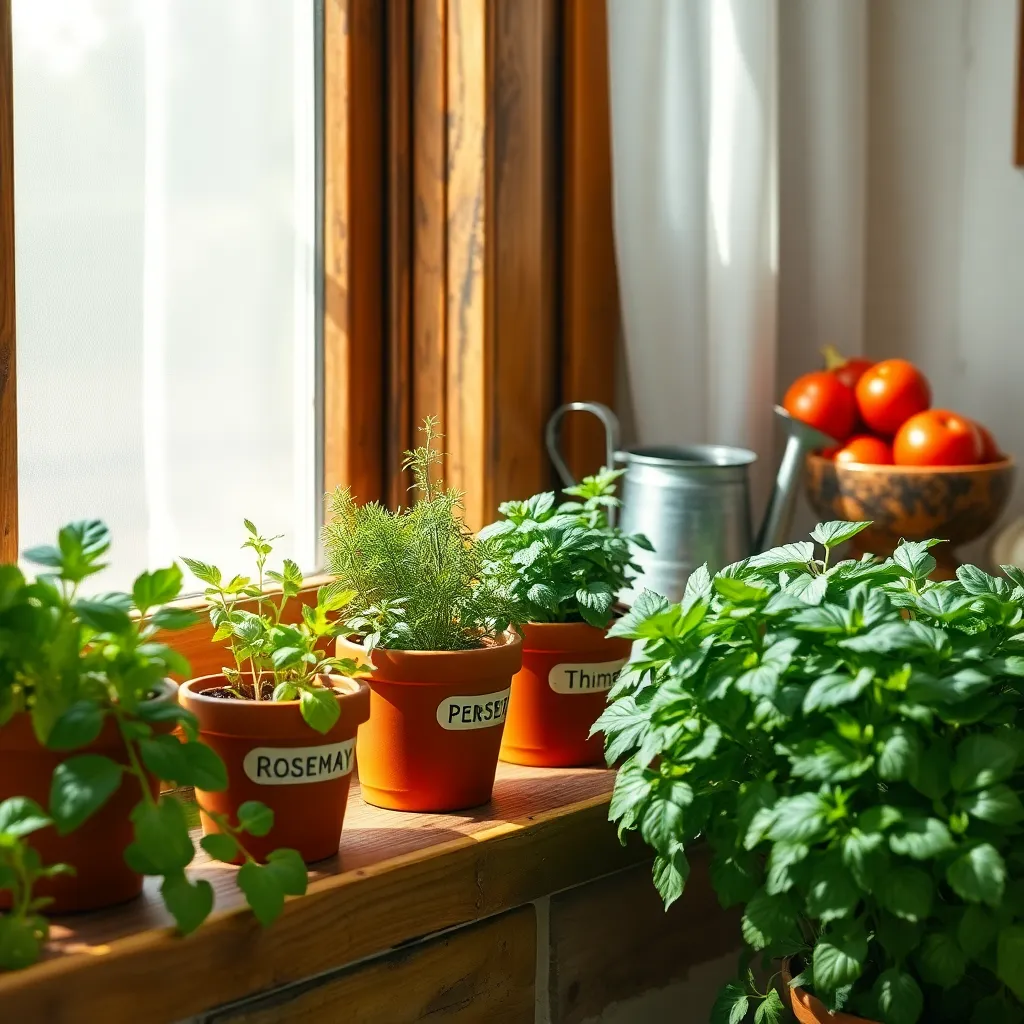
Transform your kitchen into a culinary oasis with a vibrant herb display that is both functional and decorative. Consider using small pots or a tiered shelf system to maximize space and keep your herbs within easy reach while cooking.
For beginners, start with hardy herbs like basil, mint, and parsley, which thrive indoors with minimal effort. Make sure to place them near a sunny window where they can receive at least six hours of sunlight a day, as this is crucial for their growth.
Advanced gardeners might experiment with less common herbs such as lemon balm or Thai basil, which can add unique flavors to your dishes. These herbs require similar care, but benefit from occasional pruning to encourage bushier growth and prevent legginess.
Choose a well-draining potting mix, and ensure your pots have adequate drainage holes to prevent root rot. Water your herbs when the top inch of soil feels dry, keeping in mind that overwatering can be more harmful than underwatering.
Bedroom Green Oasis Tips
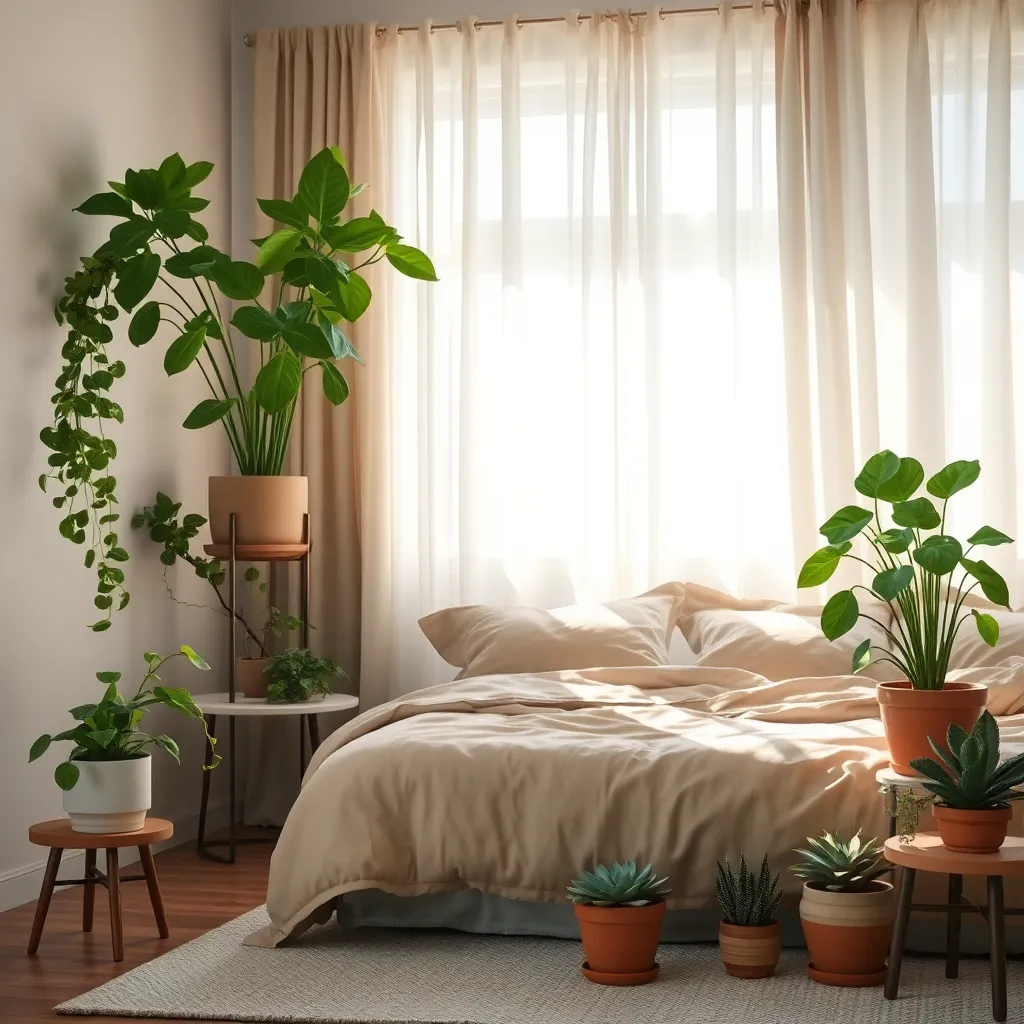
Creating a green oasis in your bedroom can significantly enhance relaxation and air quality. Start by choosing low-maintenance plants like snake plants or peace lilies, which are known for their air-purifying qualities and ability to thrive in low-light conditions.
Position your plants strategically to maximize their health benefits and aesthetic appeal. Place them on bedside tables, shelves, or hanging baskets near windows where they can receive indirect sunlight, ensuring they get the right amount of light throughout the day.
When it comes to care, remember that most bedroom plants prefer a well-draining potting mix. Using a combination of regular potting soil and perlite can help prevent root rot by promoting proper drainage, a common issue in indoor environments.
Watering frequency is crucial for maintaining healthy bedroom plants. Generally, water your plants when the top inch of soil feels dry to the touch, but be mindful of individual species’ needs, as some may require less frequent watering.
Bathroom Jungle Creations
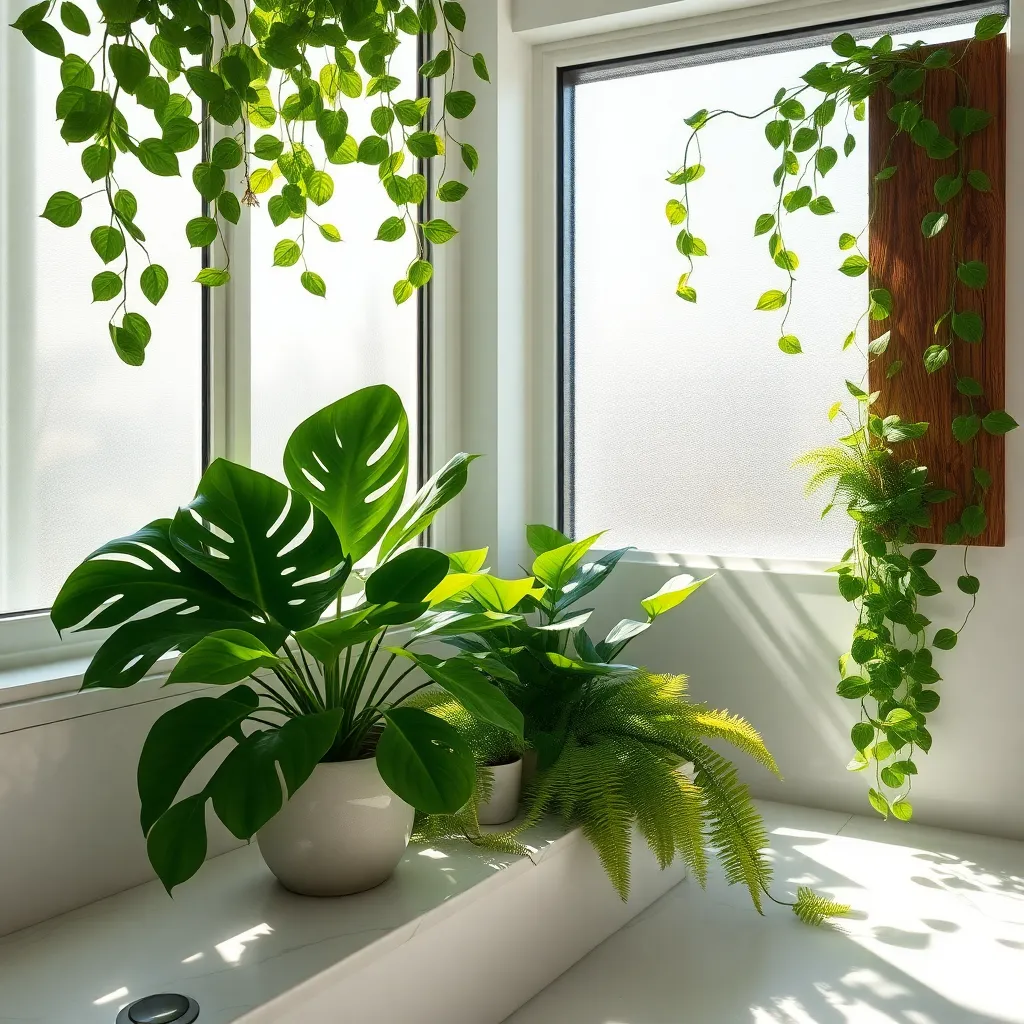
Transform your bathroom into a lush sanctuary by selecting plants that thrive in humidity. Ferns, orchids, and peace lilies are excellent choices as they naturally love the moist environment typical of bathrooms.
Ensure your bathroom jungle gets adequate light, as this is crucial for plant health. If natural light is limited, consider installing LED grow lights to provide the necessary illumination.
To prevent mold and mildew, good air circulation is essential in a bathroom setting. Use a small fan to keep air moving and prevent your plants from becoming too soggy.
Remember to choose pots with drainage holes to avoid waterlogged roots, which can be detrimental to plant health. Opt for lightweight containers, like plastic or resin, to make moving and adjusting your bathroom display easier.
Hallway Plant Arrangement Secrets
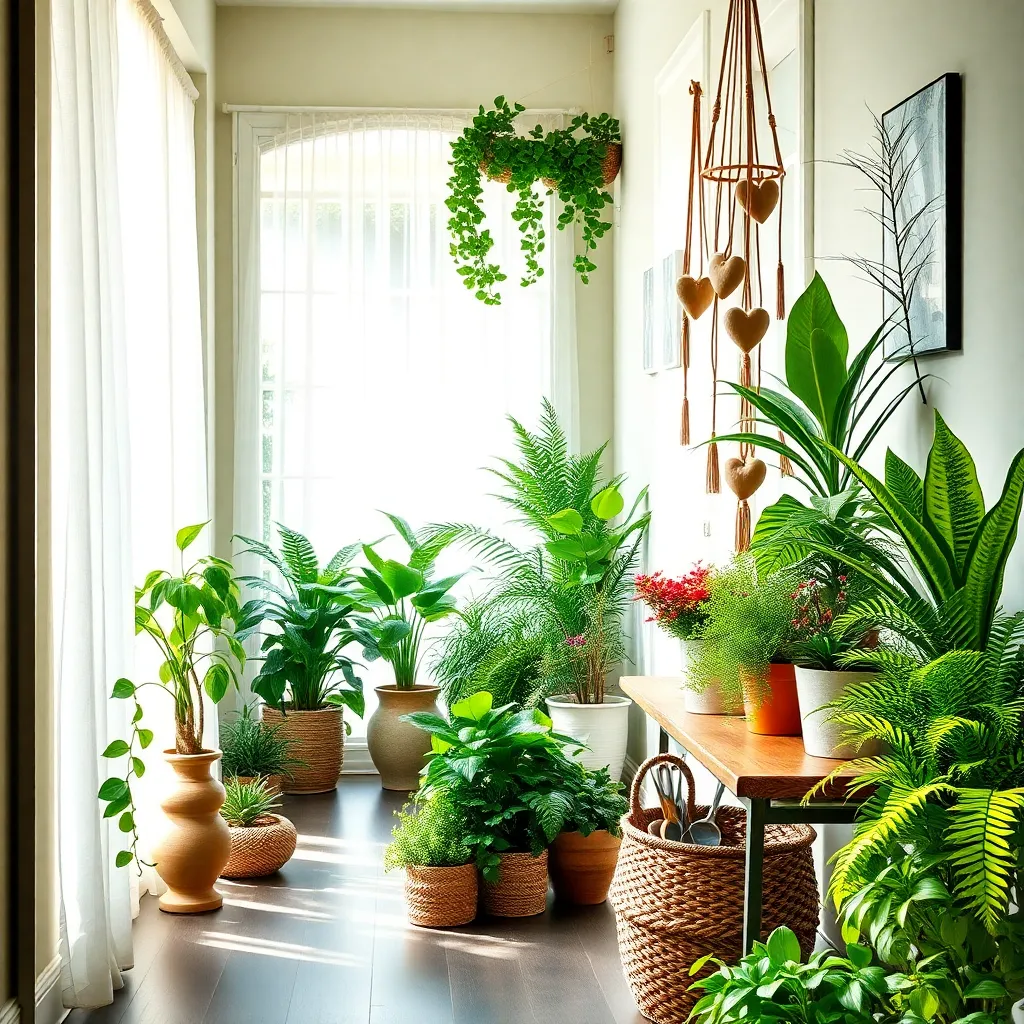
Hallways often lack natural light, making it essential to choose plants that thrive in low-light conditions. Consider placing a snake plant or ZZ plant, both of which are hardy and require minimal maintenance, making them perfect for busy areas.
To create an eye-catching display, use a mix of various heights and textures. Combine taller plants like the snake plant with shorter options like pothos, which can cascade down from a raised shelf or hanging planter.
Consistency in care is vital for hallway plants, as these areas can easily be neglected. Watering should be done sparingly, typically once every two to three weeks, ensuring the soil dries out between watering sessions to prevent root rot.
For those looking to add a touch of elegance, consider using decorative pots that complement your hallway’s decor. Choose lightweight, portable containers that allow for easy rearrangement and cleaning, ensuring your plants remain healthy and your hallway stays stylish.
Conclusion: Growing Success with These Plants
As we explored the art of integrating indoor plant displays throughout your home, we uncovered five key relationship concepts: communication through shared activities, nurturing growth together, fostering creativity, creating calming spaces for connection, and promoting mutual well-being. By embracing these principles, not only do you enhance the aesthetic of your living spaces, but you also cultivate a nurturing environment that strengthens your bond with loved ones.
Now that you’re equipped with these insights, consider starting with a simple project: select a room and collaboratively design a plant display that resonates with both your aesthetics and emotional needs. This shared endeavor can be a delightful way to deepen your connection while also beautifying your home.
To ensure these ideas remain at your fingertips, bookmark this article as a handy guide in your relationship toolkit. As you embark on this journey of growth and creativity, remember that investing time and effort into your environment is a powerful step toward lasting relationship success. By nurturing both your living space and your relationship, you set the stage for a thriving, harmonious future together.


